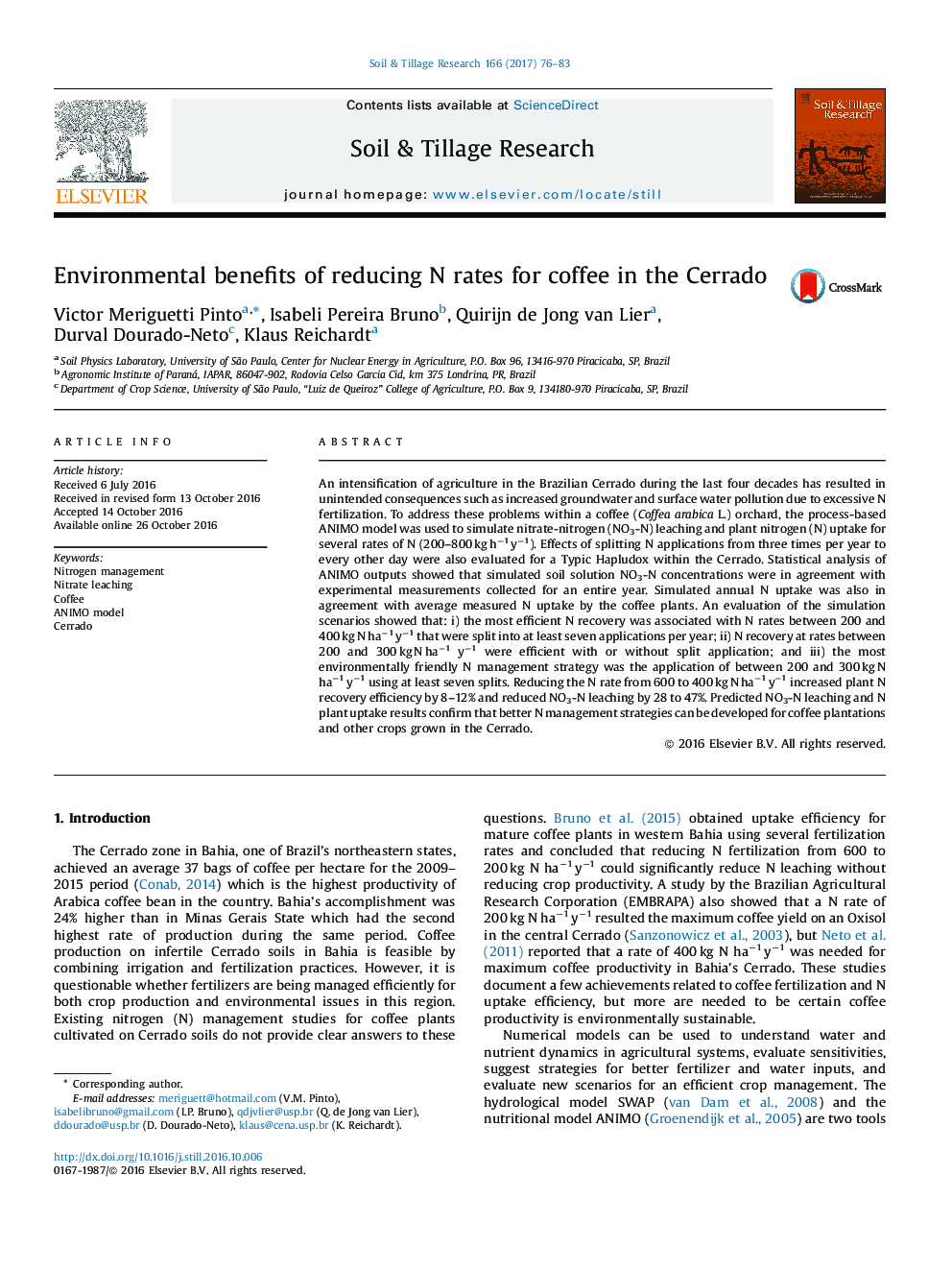| Article ID | Journal | Published Year | Pages | File Type |
|---|---|---|---|---|
| 4927610 | Soil and Tillage Research | 2017 | 8 Pages |
â¢Nitrogen cycling for coffee grown on a Cerrado soil was simulated.â¢ANIMO applied to a perennial crop was comparable to in situ experimental data.â¢ANIMO predicted satisfactorily nitrate concentrations in soil under coffee cultivation.â¢Decreasing N rates from 600 to 400 kg N haâ1 yâ1 plant uptake was maintained with less leaching.
An intensification of agriculture in the Brazilian Cerrado during the last four decades has resulted in unintended consequences such as increased groundwater and surface water pollution due to excessive N fertilization. To address these problems within a coffee (Coffea arabica L.) orchard, the process-based ANIMO model was used to simulate nitrate-nitrogen (NO3-N) leaching and plant nitrogen (N) uptake for several rates of N (200-800 kg hâ1 yâ1). Effects of splitting N applications from three times per year to every other day were also evaluated for a Typic Hapludox within the Cerrado. Statistical analysis of ANIMO outputs showed that simulated soil solution NO3-N concentrations were in agreement with experimental measurements collected for an entire year. Simulated annual N uptake was also in agreement with average measured N uptake by the coffee plants. An evaluation of the simulation scenarios showed that: i) the most efficient N recovery was associated with N rates between 200 and 400 kg N haâ1 yâ1 that were split into at least seven applications per year; ii) N recovery at rates between 200 and 300 kg N haâ1 yâ1 were efficient with or without split application; and iii) the most environmentally friendly N management strategy was the application of between 200 and 300 kg N haâ1 yâ1 using at least seven splits. Reducing the N rate from 600 to 400 kg N haâ1 yâ1 increased plant N recovery efficiency by 8-12% and reduced NO3-N leaching by 28 to 47%. Predicted NO3-N leaching and N plant uptake results confirm that better N management strategies can be developed for coffee plantations and other crops grown in the Cerrado.
